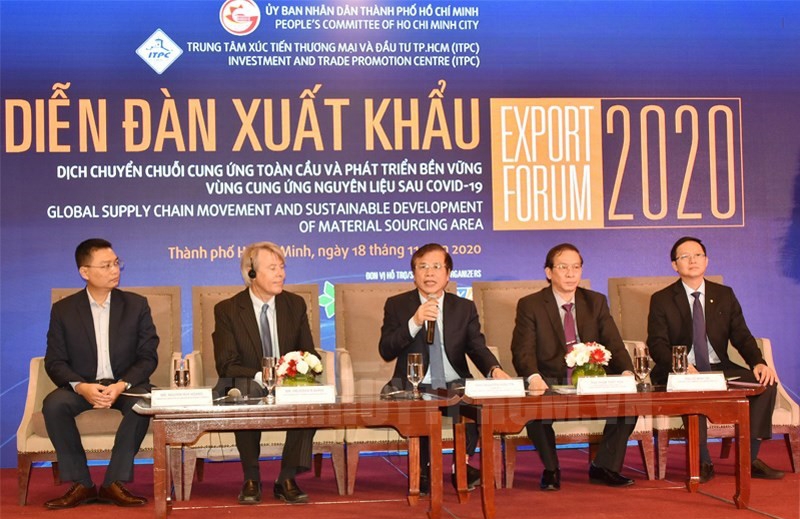Vietnam’s agricultural exports on the rise
 |
| The forum is expected to help enterprises create and build effective strategies to develop exports |
"Vietnam is in the spotlight as a potential supplier as international enterprises are seeking other markets to move away from China," said Nguyen Huu Tin, chairman of Investment & Trade Promotion Center (ITPC) at the Export Forum 2020 themed "Global supply chain movement and sustainable development of material sourcing area".
Accordingly, with 13 effective free trade agreements (FTAs) and the upcoming RCEP, Vietnam has generated many export opportunities. The RCEP agreement with the participation of 15 members creates a market with a size of about 2.2 billion people, accounting for about 30 per cent of the world's population. GDP of this region is about $26 billion, about 30 per cent of the global GDP. It is the largest trade-generating region in the world, he added.
According to the ITPC, Vietnam’s agricultural products have seen positive signs in export markets over the past few years. Vietnam now exports agricultural products to 185 countries, ranking second in Asia and 15th worldwide. At present, China is known as Vietnam's biggest export market, followed by the US.
In 2019, Vietnam’s export turnover of agro-forestry-fishery products reached nearly $41.3 billion, occupying 15.6 per cent the country’s total export revenue, up 3.25 per cent compared to 2018.
In the first nine months of 2020, despite the impact of COVID-19 pandemic, the export of agro-forestry-fishery products reached $30.5 billion, accounting for 15 per cent of the total export of the country, up 1.6 per cent over the same period in 2019.
Pham Thiet Hoa, general director of Saigon Agriculture Incorporation said that Vietnam has a diversity of soil and climate resulting in an assortment of temperate or tropical products, especially the traditional and regional specialities. He advised enterprises to join hands to process and export the potential products.
Additionally, enterprises need to take advantage of preferential tariffs from FTAs and the upcoming RCEP. However, they have to fully understand these agreements to make sure they can make the most of them.
Also, centres, agencies and departments for trade promotion and investment need to support enterprises with information on export markets to help them get accurate and correct information of the markets.
What the stars mean:
★ Poor ★ ★ Promising ★★★ Good ★★★★ Very good ★★★★★ Exceptional
Related Contents
Latest News
More News
- Six localities record double-digit growth as regional performance diverges in 2025 (January 06, 2026 | 18:00)
- E-commerce market undergoes transformation amid rising competition and regulation (January 06, 2026 | 17:54)
- Vietnam’s industrial output hits seven-year high in 2025 (January 06, 2026 | 17:47)
- GELEX’s credit rating outlook upgraded to 'Positive' by VIS Rating (January 06, 2026 | 16:49)
- Finance sector lays firm groundwork for 2026 after major reform (January 06, 2026 | 15:30)
- Vietnam’s seafood exports surpass $11 billion in 2025 (January 06, 2026 | 08:51)
- Vietnam GDP posts second-strongest growth since 2011 (January 06, 2026 | 08:35)
- Double-digit GDP growth within reach with shift to higher-value expansion (January 06, 2026 | 08:33)
- Takeda Vietnam awarded for ongoing support of Vietnam’s sustainability efforts (December 31, 2025 | 21:00)
- Vietnam's retail market tops $269 billion in 2025 amid e-commerce boom (December 31, 2025 | 19:00)

 Tag:
Tag:





















 Mobile Version
Mobile Version